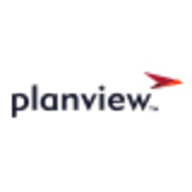

OpenText Software Delivery Management and Planview AgilePlace are both key players in the project management solutions market. While OpenText provides a comprehensive suite of delivery management tools, Planview AgilePlace gains an advantage with its agile-based features that appeal to teams focused on flexibility and iterative progress.
Features: OpenText Software Delivery Management includes advanced task tracking, seamless integration capabilities, and centralized reporting tools, tailored for enterprises that focus on comprehensive oversight. Planview AgilePlace excels in agile planning, managing strategic backlogs, and enabling real-time collaboration, making it ideal for teams needing adaptability and dynamic project environments.
Room for Improvement: OpenText could enhance its user interface and further simplify its deployment process, as well as increase the speed of customer support response. Additionally, offering more agile-based features could help meet evolving market demands. Planview AgilePlace would benefit from greater integration with external systems, a broader range of reporting options, and more extensive customization abilities for user workflows.
Ease of Deployment and Customer Service: OpenText Software Delivery Management supports a structured deployment strategy with ongoing comprehensive support options, suitable for larger enterprises. Planview AgilePlace, on the other hand, offers a cloud-based model for quick setup and intuitive onboarding, with support that emphasizes quick adaptation and continuous project evolution.
Pricing and ROI: OpenText Software Delivery Management is typically associated with higher setup costs, justified by its extensive feature set and long-term value, especially for complex organizations. In contrast, Planview AgilePlace offers a more cost-effective entry point and provides quicker returns on investment, appealing to businesses focused on swift deployment and agile benefits.
The ability to generate audit evidence with a single click saves ten days of work for ten people, enabling them to focus on other tasks.
We can expand the number of servers and resources as required.
While it aims to be as flexible as possible for a large enterprise application, sometimes there are limitations that may not meet specific organizational needs.
OpenText ALM Octane is an expensive product.
Its ability to generate audit evidence with a single click is a significant advantage, as it saves considerable time and money compared to manual processes.
| Product | Market Share (%) |
|---|---|
| OpenText Software Delivery Management | 5.0% |
| Planview AgilePlace | 1.7% |
| Other | 93.3% |

| Company Size | Count |
|---|---|
| Small Business | 7 |
| Midsize Enterprise | 2 |
| Large Enterprise | 32 |
| Company Size | Count |
|---|---|
| Small Business | 2 |
| Midsize Enterprise | 3 |
| Large Enterprise | 7 |
OpenText Software Delivery Management provides application lifecycle management with Agile and Waterfall support. It features intuitive interfaces, CI/CD integration, automated testing, and robust reporting, improving project management efficiency and usability.
Designed to enhance teams' productivity and streamline processes, OpenText Software Delivery Management integrates seamlessly with Agile methodologies. Its comprehensive backlog and requirements management, user stories, and test management make it a complete tool for managing the development lifecycle. The platform aligns with DevOps, providing traceability and extensive customization options. Traceability from requirements to deployments is enhanced, making it easier for teams to track progress. It offers integration with popular tools like Jenkins and JIRA, ensuring a unified approach to continuous delivery and testing management.
What key features does OpenText Software Delivery Management include?OpenText Software Delivery Management is implemented across technology-focused industries, supporting Agile processes like requirements management and defect tracking. Organizations use it to standardize development workflows and optimize continuous delivery integration, choosing it for its ability to support both Agile and Waterfall methodologies within application lifecycle management.
Planview AgilePlace is a cloud-based solution designed to provide businesses with a continuous flow of work to help teams accelerate delivery times by visualizing their work with enterprise Kanban boards and lean metrics. Planview offers project managers the visibility, resource management, and real-time analytics necessary to help their teams reduce bottlenecks and dependencies and work more effectively. By using Kanban boards, teams are able to visually track and manage the flow of their work from the strategy level, through implementation up to end-product delivery.
Planview AgilePlace Benefits
Planview helps teams to smoothly implement their strategies by offering its users the following benefits:
Reviews from Real Users
Planview AgilePlace stands out among its competitors for a number of reasons. Several major ones are its user-friendly management pane, the visibility that it provides for its users, and its agile management capabilities.
A manufacturing manager at a large manufacturing company writes, “Using the tool seems to save time versus trying to do things in a regular manner. It is highly collaborative; everybody can see things in one place. It is a highly functional, but pretty simple tool. That is hard to find: A tool that has a lot of functions, but is also simple.”
We monitor all Application Lifecycle Management (ALM) Suites reviews to prevent fraudulent reviews and keep review quality high. We do not post reviews by company employees or direct competitors. We validate each review for authenticity via cross-reference with LinkedIn, and personal follow-up with the reviewer when necessary.